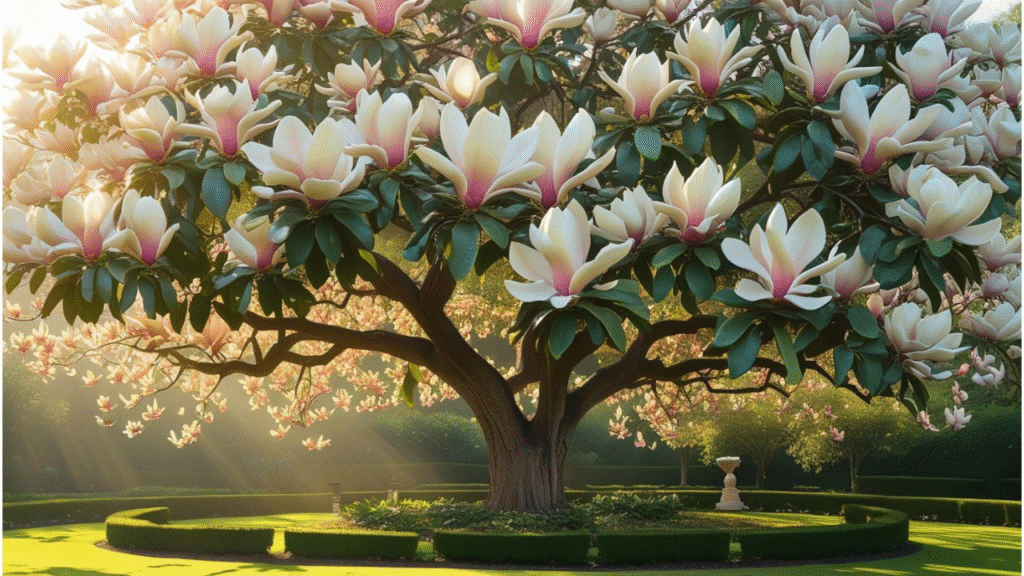
Growing Magnolia Trees from Seed: A Step-by-Step Guide for Success
Have you ever dreamed of growing your own magnolia tree, with its large, fragrant blooms and striking foliage? 🌸 While these magnificent trees are often bought as mature plants, did you know that growing magnolia trees from seed is an incredibly rewarding (though sometimes tricky) process? If you’re up for a gardening challenge that promises long-term beauty, you’re in the right place!
Growing magnolia trees from seed can feel daunting due to their slow germination and specific care requirements. But don’t worry—this step-by-step guide will help you navigate the entire process, from collecting seeds to nurturing your young trees into full bloom. Whether you’re a seasoned gardener or a beginner, this article will provide you with clear, actionable tips and tricks to ensure your magnolia-growing journey is a success.
By the end of this guide, you’ll have everything you need to start your own magnolia tree from seed, turning your patience and care into a stunning addition to your garden. Ready to get started? Let’s dive in! 🌱
Table of Contents
Toggle🌸 Understanding Magnolia Trees 🌸
Before you dive into the exciting world of growing magnolia trees from seed, it’s important to understand what makes these trees so special—and why they’re worth the effort! 🌿 Magnolia trees are known for their stunning beauty, with large, fragrant flowers and glossy leaves that add elegance to any garden. 🌷 But there’s more to these trees than just their appearance. Let’s break it down to make sure you have a solid foundation for your growing journey. 🌿
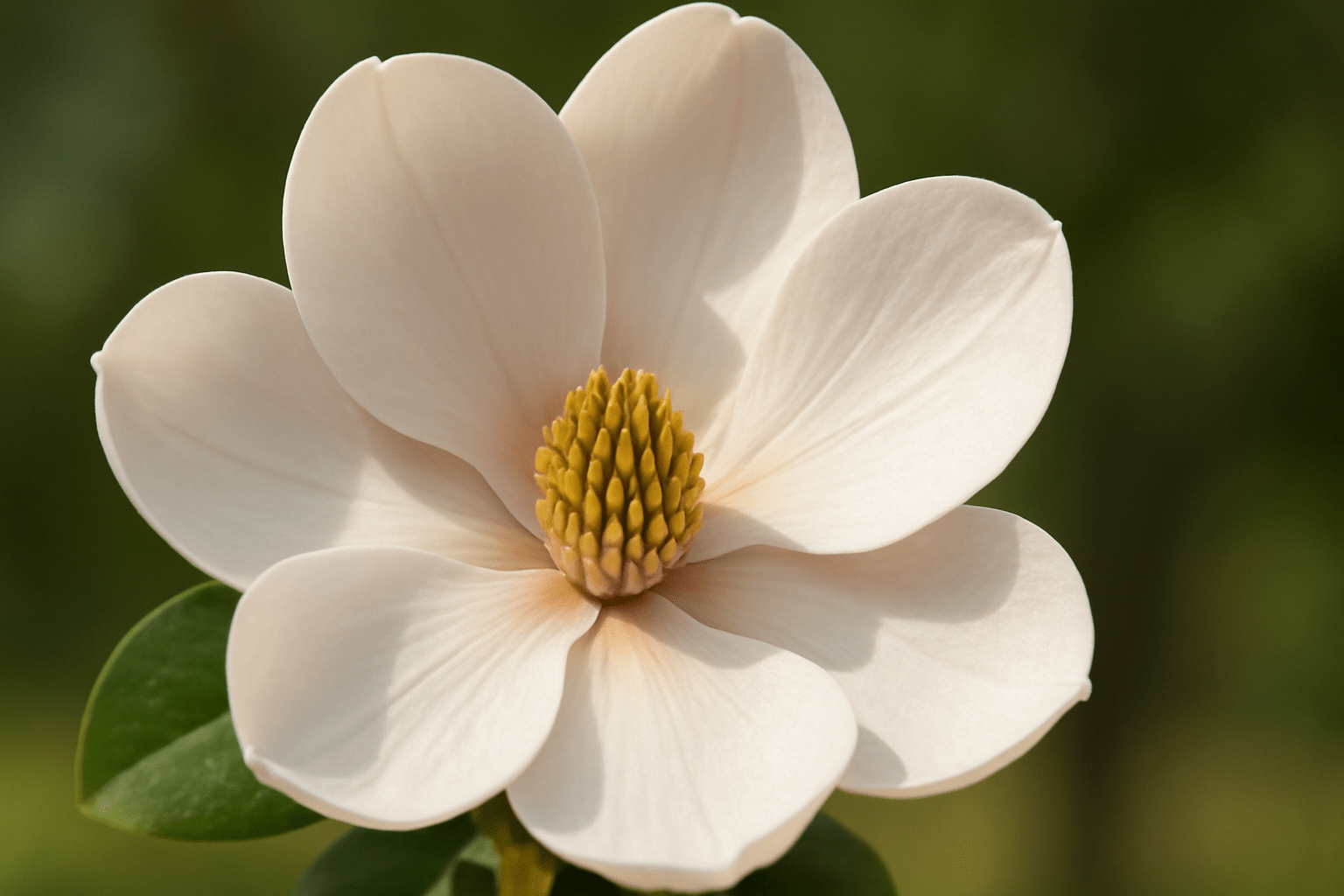
🌷 What Are Magnolia Trees? 🌷
Magnolia trees are deciduous or evergreen trees that belong to the Magnoliaceae family. 🌸 There are over 200 species, ranging from small shrubs to towering trees, each offering unique traits. 🌱 Some of the most popular varieties include: 🌳
- Southern Magnolia (Magnolia grandiflora): Famous for its large, fragrant white flowers and glossy leaves. 🌸
- Star Magnolia (Magnolia stellata): A smaller, early-blooming tree with star-shaped white or pink flowers. 🌺
- Saucer Magnolia (Magnolia x soulangeana): Known for its large, striking pink or purple blossoms. 💐
Magnolias are native to temperate and subtropical regions and are cherished for their eye-catching flowers and ability to thrive in a variety of climates. 🌿
🌼 Why Grow Magnolia Trees from Seed? 🌼
You might wonder, “Why bother growing magnolias from seed?” 🌱 The answer is simple: It’s a rewarding, cost-effective way to add a beautiful tree to your garden—plus, you get to enjoy the satisfaction of watching your magnolia grow from the ground up! 🌸
Growing magnolia trees from seed offers several benefits: 🌱
- Cost savings: Magnolia seeds are often less expensive than buying a fully grown tree. 💰
- Unique results: You might even end up with a new variety if you experiment with cross-pollination. 🌺
- A rewarding process: Watching a tiny seed transform into a magnificent tree over the years can be incredibly fulfilling. 🌳
While magnolias are notoriously slow-growing, the effort is worth it for those who are patient and eager to see their tree blossom. 🌸
🌿 Common Challenges When Growing Magnolia Trees from Seed 🌿
Although growing magnolias from seed is rewarding, it can be a bit tricky. 🌧️ Here are some challenges you might face: 🌱
- Slow Germination: Magnolia seeds can take months to sprout, so patience is essential. ⏳
- Specific Temperature Needs: They require a cold stratification process to break dormancy, which means you’ll need to store them in the fridge for several weeks. 🧊
- Fragile Seedlings: Once the seeds begin to grow, magnolia seedlings can be quite delicate, requiring careful attention to soil moisture and light conditions. 💧
But don’t worry! 🌸 With the right approach, you can successfully overcome these challenges and grow a beautiful magnolia tree from seed. 🌿✨
By understanding the unique characteristics of magnolia trees and the challenges involved in growing them from seed, you’re setting yourself up for success. 🌳 Stay tuned as we dive into the step-by-step guide to make your magnolia-growing journey a success! 🌱
🌿 Preparing for Success: The Essentials of Growing Magnolia Trees from Seed 🌿
Now that you know a bit about magnolia trees and their challenges, it’s time to get prepared! 🌱 Growing magnolia trees from seed requires a bit of planning and the right tools, but don’t worry—it’s easier than it sounds! 🌿 Let’s walk through the essentials you’ll need to set yourself up for success. 🌱
🌱 1. Choosing the Right Magnolia Variety 🌱
First things first—choosing the right magnolia variety is crucial for your growing success! 🌸 Some magnolia species are easier to grow from seed than others, while some are more suited for specific climates. 🌿 Here are a few varieties to consider: 🌷
- Southern Magnolia: This variety thrives in warmer climates and is perfect for regions with mild winters. 🌞
- Star Magnolia: Ideal for cooler climates, this variety blooms early in the season with beautiful white or pink star-shaped flowers. 🌸
- Saucer Magnolia: A hybrid variety that can handle a variety of climates and produces large, stunning flowers. 🌺
When selecting your magnolia seeds, make sure the variety matches your local climate and the space you have available. 🌍 If you’re unsure which variety to choose, check your USDA Hardiness Zone to find the best options for your region. 🌿
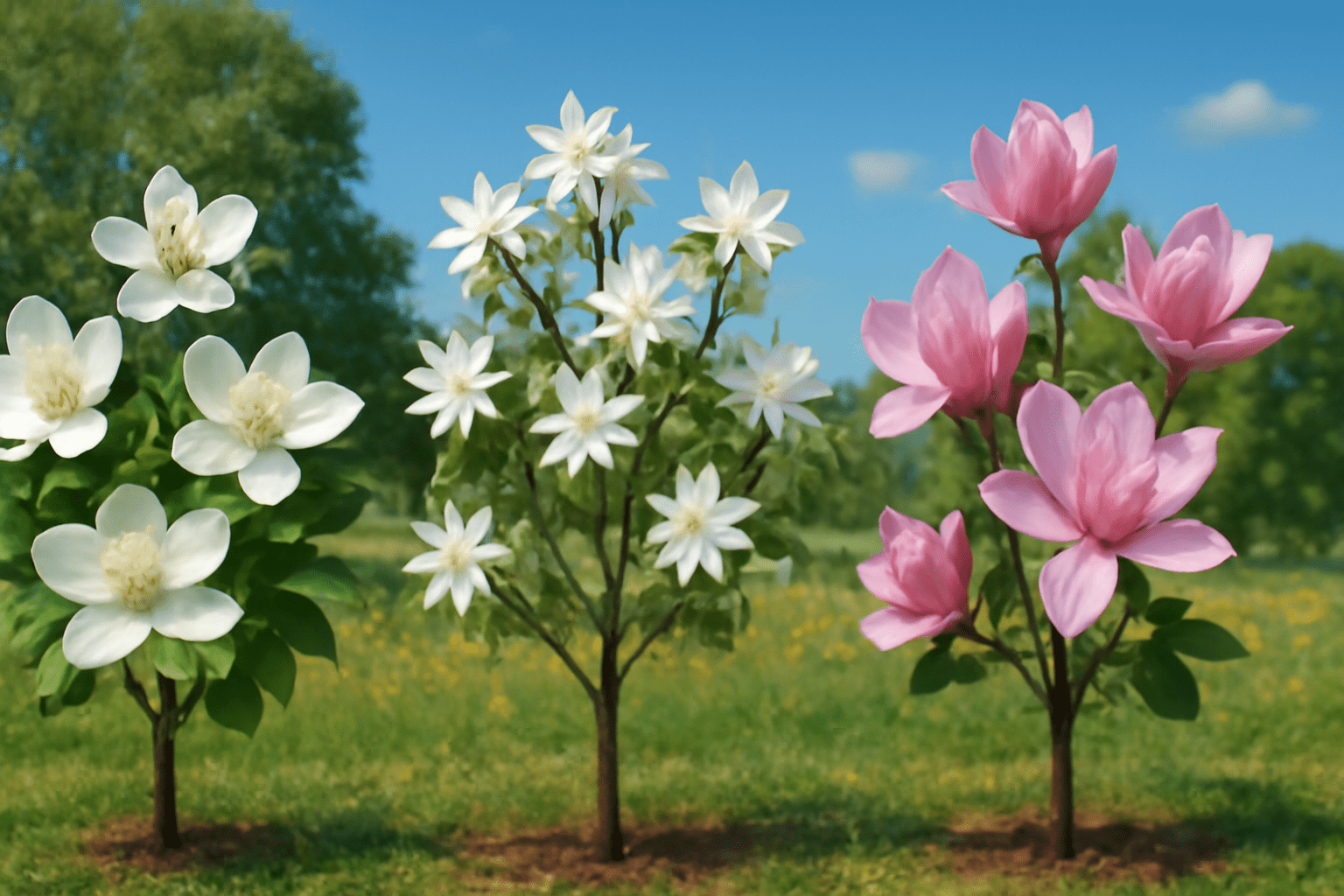
🌸 2. Collecting Magnolia Seeds 🌸
Magnolia trees produce seeds inside cone-like structures, and these seeds are usually harvested in late summer or early fall when they’ve ripened. 🌱 Here’s how to collect them properly: 🌿
- Look for mature cones: Wait until the seed cones begin to open. 🌺 You’ll know they’re ready when they start to split apart and reveal the seeds inside. 🌿
- Harvesting: Gently collect the seeds from the opened cones. 🌳 Make sure you choose seeds that are plump and firm. 🌱
- Cleaning the seeds: Remove any remaining bits of cone or debris from the seeds. 💧 You can rinse them under cool water and let them dry for a day or two. 🌿

If you’re not able to collect seeds from your own magnolia tree, you can often find seeds online or at local garden centers. 🌸 Just be sure to source them from reputable suppliers! 🌻
🌷 3. Tools and Materials You’ll Need 🌷
Having the right materials at your fingertips is key to a smooth and successful seed-growing process. 🌿 Here’s a quick checklist of the essentials: 🌱
- Seed trays or small pots: These will help you start your seeds indoors or in a greenhouse. 🏡
- Well-draining soil: Use a potting mix that’s light, airy, and drains well—magnolias don’t like to sit in soggy soil! 🌱
- Plastic bag or humidity dome: To maintain moisture and humidity while your seeds are germinating. 💧
- A refrigerator or cool space: For the stratification process (more on that soon!). 🥶
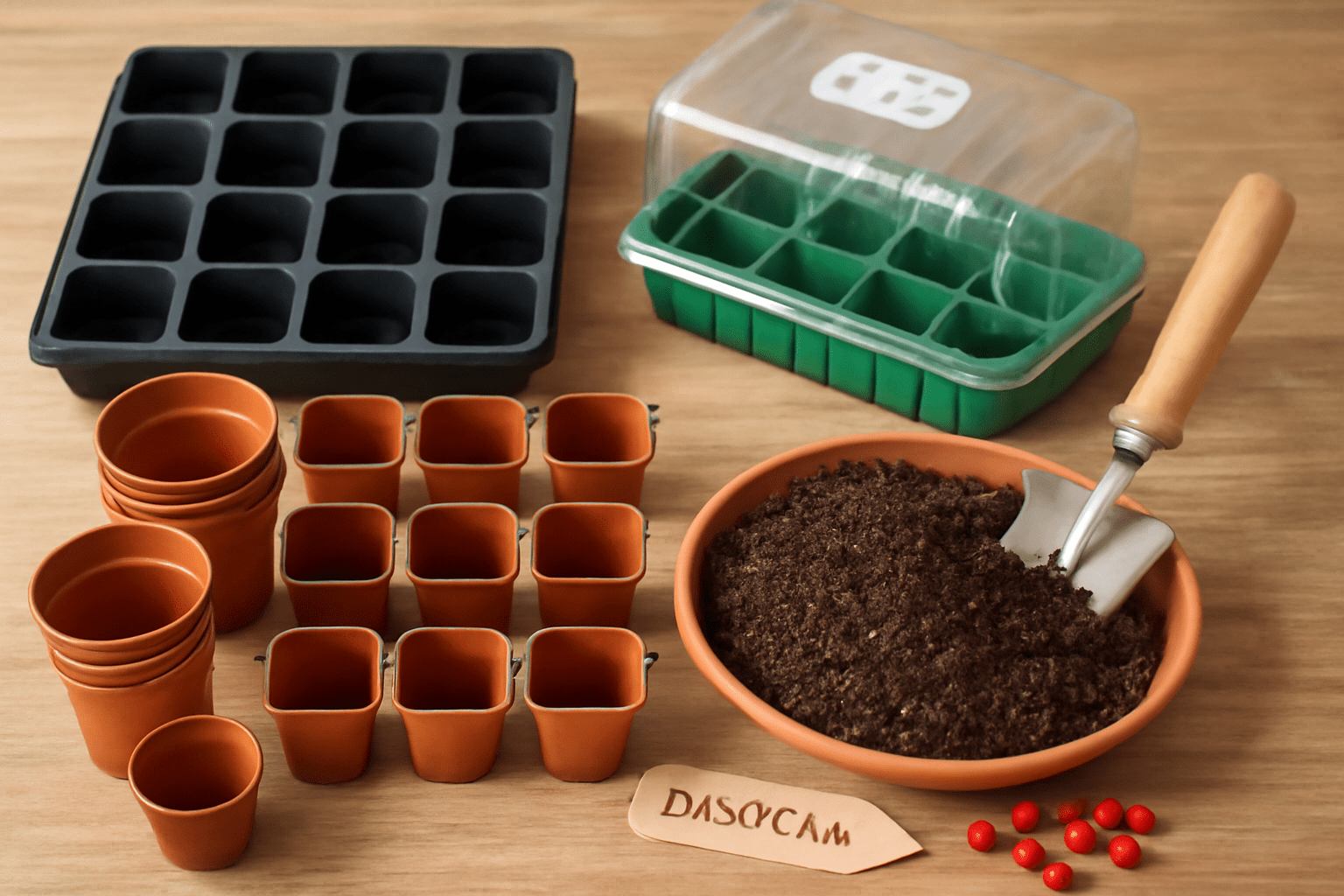
Gathering all your materials ahead of time will make the next steps much smoother. 🌿
🌸 4. Preparing for Stratification 🌸
Before you plant your magnolia seeds, there’s an important process called cold stratification that you can’t skip. 🌱 Magnolia seeds need a period of cold treatment to break dormancy and start the germination process. 🥶 Here’s how to do it: 🌿
- Soak the seeds: Begin by soaking your magnolia seeds in warm water for 24 hours to soften the seed coat. 💧
- Stratify in the fridge: Place the soaked seeds in a plastic bag with some moist sphagnum moss or sand. 🏡 Seal the bag and refrigerate it for 30 to 60 days. 🌨️ The ideal temperature for stratification is around 40°F (4°C), so your fridge is the perfect spot! 🧊
Stratification mimics the natural winter conditions magnolia seeds would experience in the wild, and it’s crucial for successful germination. ❄️
🌿 5. Timing is Everything 🌿
Magnolia seeds don’t rush, and neither should you! ⏳ The stratification process alone can take several months, so make sure you start early if you’re hoping to plant your magnolia in the spring. 🌼 Timing is key for both the stratification and the planting process. 🌱
If you’re planning to start your magnolia trees indoors, aim to begin stratification in late winter, so your seedlings will be ready to transplant by late spring. 🌿 If you’re planting directly outdoors, wait until all risk of frost has passed. ❄️
By taking the time to properly prepare, you’re setting the stage for a successful growing experience! 🌳 With the right variety, a bit of patience, and the essential tools and techniques, you’ll be well on your way to nurturing your very own magnolia tree from seed. 🌱
Stay tuned as we walk through the step-by-step process of germinating magnolia seeds in the next section! 🌸
🌱 Step-by-Step Guide to Germinating Magnolia Seeds 🌱
Now that you’ve gathered everything you need and are prepared for success, it’s time to dive into the most exciting part: germinating your magnolia seeds! 🌸 While magnolia seeds can be a bit slow to sprout, following the right steps will give you the best chance of success. 🌿 Let’s break it down, step by step, so you know exactly what to do. 🌸
🌿 Step 1: Stratification – The Key to Successful Germination 🌿
Before you can even think about planting your seeds, they need to undergo cold stratification, which simulates the natural winter conditions that magnolia seeds require to break dormancy. 🌱
- Soak the Seeds: Begin by soaking your magnolia seeds in warm water for 24 hours. 🌿 This softens the tough seed coat and prepares the seed for the cold treatment. 💧
- Refrigerate for 30–60 Days: After soaking, place the seeds in a plastic bag with moist sphagnum moss or sand. 🧊 Seal the bag and store it in your refrigerator at about 40°F (4°C). 🌿 This cold stratification period mimics winter and helps trigger germination. 🌨️

Pro Tip: If you’re growing magnolias in warmer climates, it’s especially important to give the seeds the proper cold treatment to ensure successful sprouting. 🥶
🌸 Step 2: Preparing the Planting Medium 🌸
Once your seeds have undergone stratification, it’s time to get your soil ready. 🌿 Magnolias prefer well-draining, acidic soil that allows their delicate roots to thrive. 🌱 Here’s how to prepare the perfect planting mix: 🌸
- Use a Well-Draining Potting Mix: Choose a high-quality potting soil that drains well. 🌿 You can mix in sand or perlite to improve drainage and prevent root rot. 💧
- Fill Seed Trays or Pots: Fill seed trays or small pots with the soil mix, leaving enough room at the top for planting the seeds. 🌱 Lightly press the soil to remove any air pockets. 🌳

Magnolia trees don’t like wet feet, so make sure your soil allows water to drain freely. 🌱
🌷 Step 3: Planting the Magnolia Seeds 🌷
It’s finally time to plant your seeds! 🌱 The planting depth and spacing are key for giving your seeds the best chance at sprouting. 🌸
- Plant the Seeds: Use your fingers or a small tool to create small holes in the soil, about 1 to 2 inches deep. 🌿 Gently place the seeds in the holes and cover them lightly with soil. 🌱 Be sure to space them out to avoid overcrowding. 🌳
- Press the Soil Firmly: After planting, lightly press the soil down to ensure good contact between the seed and the soil. 💧 This helps water reach the seed more effectively. 🌱
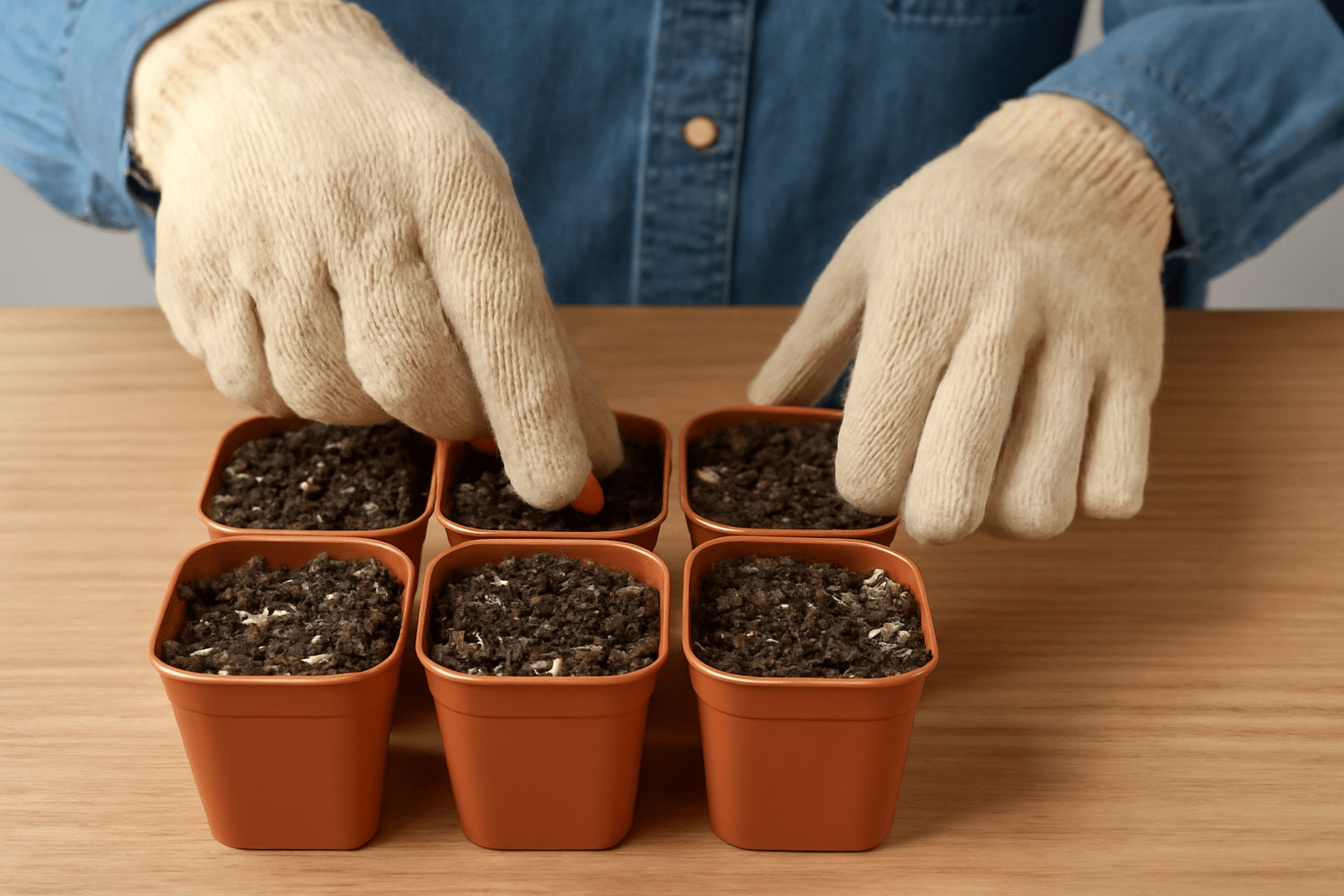
Note: Don’t plant your magnolia seeds too deeply. 🌿 They need access to oxygen and moisture to germinate successfully. 🌼
🌿 Step 4: Providing the Right Conditions for Germination 🌿
Now that your seeds are planted, it’s crucial to recreate the right environment for germination. 🌱 Magnolia seeds need warmth, moisture, and light to start growing, but you have to find the balance to prevent overwatering or overheating. 🌸
- Temperature: Keep your seed trays or pots in a warm area with a consistent temperature between 65–75°F (18–24°C). 🌞 A warm windowsill or a seed-starting mat works well to maintain consistent warmth. 🌿
- Humidity: Magnolia seeds need a moist environment to sprout, but they don’t like to sit in soggy soil. 🌱 Cover your pots or trays with a plastic dome or a clear plastic bag to maintain humidity levels. 🍃 Be sure to open the bag occasionally to let in some fresh air. 🌿
- Light: Once your seeds begin to sprout, they will need plenty of bright, indirect light. 🌞 If you’re starting indoors, place them near a window or under a grow light. 🌸 However, be careful not to place them in direct sunlight, as this can burn the delicate seedlings. 🌿
Pro Tip: Keep the soil moist, but not soaked! 💧 Overwatering is a common mistake that can lead to mold or rot. 🌱 A gentle misting or using a bottom-watering method can help keep the soil moist without drowning the seeds. 💧
🌸 Step 5: Caring for Your Sprouts 🌸
After several weeks, you should begin to see small green shoots emerging from the soil. 🌱 While this is exciting, it’s important to provide your new seedlings with the right care as they continue to grow. 🌿
- Watering: As your seedlings grow, continue to water them regularly to keep the soil moist but not soggy. 🌿 Use a spray bottle or a gentle watering can to avoid disturbing the delicate roots. 🌱
- Fertilizing: Avoid fertilizing your young seedlings until they have a few sets of true leaves. 🌿 Once they’re established, you can begin feeding them with a balanced, slow-release fertilizer. 🌱
- Transplanting: Once the seedlings are large enough and have several sets of leaves, they can be carefully transplanted into individual pots. 🌸 Be sure to use the same well-draining soil mix to prevent root shock. 🌱
As your seedlings grow, be patient and continue to care for them by providing the right light, water, and nutrients. 🌿
🌱 A Quick Recap 🌱
Germinating magnolia seeds isn’t a fast process, but it’s incredibly rewarding! 🌱 To summarize, here are the key steps to remember: 🌿
- Stratification: Soak and refrigerate your seeds for 30-60 days to break dormancy. 🧊
- Prepare the soil: Use a well-draining, acidic potting mix. 🌱
- Planting: Plant your seeds 1-2 inches deep in the soil and press it down gently. 🌸
- Maintain the right conditions: Keep the seeds warm, humid, and in indirect light. 🌿
- Care for the sprouts: Water carefully, avoid over-fertilizing, and transplant when ready. 🌱
With the right care and patience, your magnolia seedlings will eventually grow into stunning trees that will grace your garden for years to come! 🌳
Stay tuned for the next section, where we’ll dive into caring for your young magnolia trees as they continue to grow and thrive! 🌸
🌿 Caring for Your Magnolia Tree Seedlings 🌿
Congratulations on successfully germinating your magnolia seeds! 🌱 Now comes the exciting part: nurturing your tiny seedlings into strong, healthy trees. 🌳 This stage requires patience, attention, and a little TLC. 🌸 Let’s go over everything you need to know about caring for your magnolia tree seedlings as they grow. 🌿
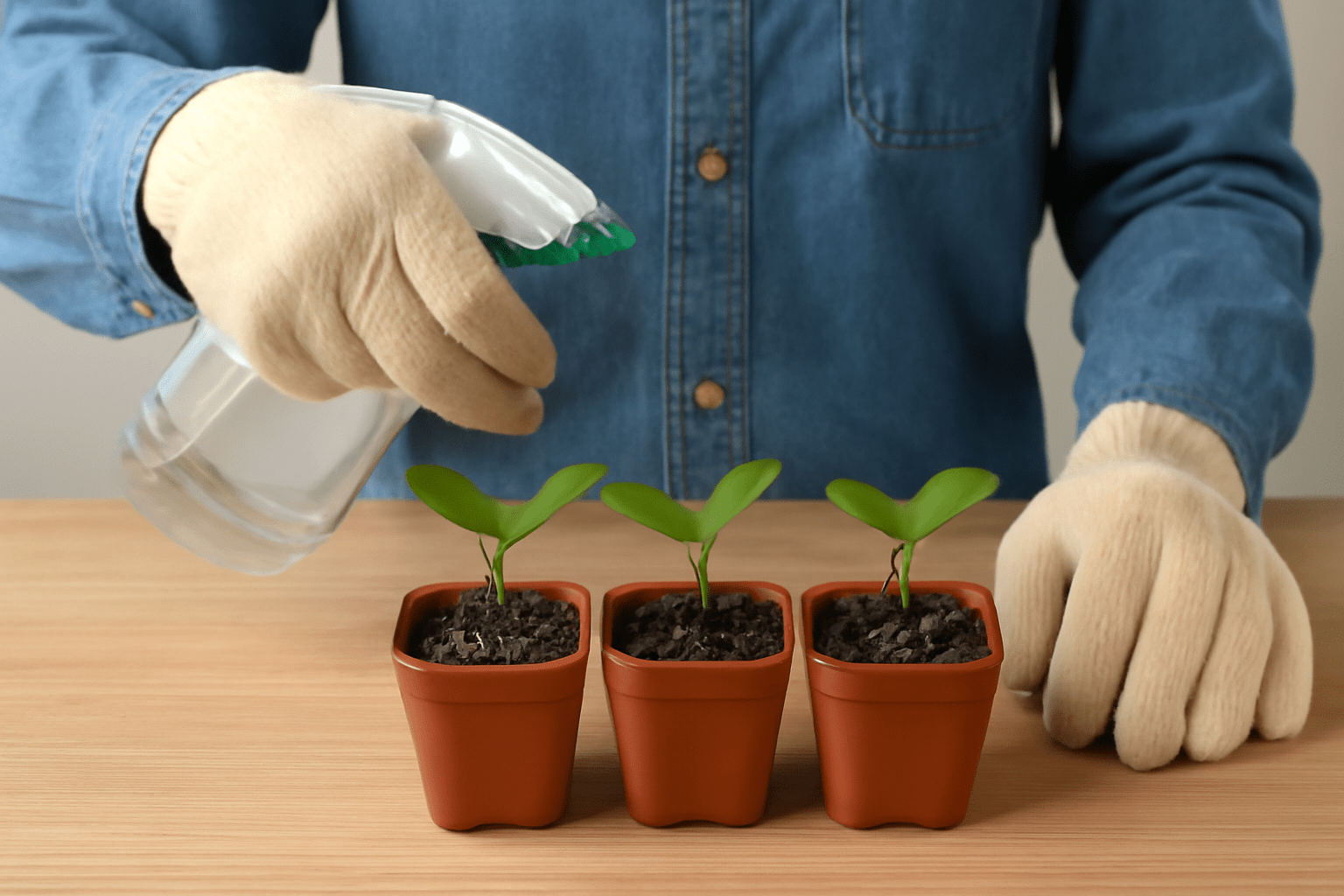
🌱 1. How to Transition Seedlings to Outdoor Planting 🌱
Magnolia seedlings are delicate in their early stages, so it’s important to transition them carefully when the time comes to move them outdoors. 🌿 Here’s how to ensure a smooth transition: 🌱
- Hardening Off: Before planting your seedlings outside, they need to acclimate to outdoor conditions. 🌞 This process, called “hardening off,” helps prevent transplant shock. 🌿 To do this:
- Gradually introduce your seedlings to outdoor temperatures over the course of a week. 🌱
- Start by placing them in a shaded area for a few hours each day, gradually increasing the time they spend outside. 🌳
- After about a week, they should be ready to be planted in the garden or moved into larger pots. 🌿
- Best Time to Plant Outdoors: The best time to transplant magnolia seedlings outdoors is in early spring or fall, after the last frost has passed. 🌸 Avoid planting them during the hot summer months, as they may struggle to adjust to the heat. 🌞
🌷 2. Choosing the Right Soil and Location for Your Magnolia Seedlings 🌷
Magnolias have specific soil and location preferences that will help them thrive. 🌱 Here’s how to choose the best planting spot: 🌸
- Soil Requirements: Magnolias prefer slightly acidic, well-draining soil. 🌿 If your garden soil is heavy or clay-like, mix in organic matter like compost to improve drainage and texture. 💧 Magnolia trees don’t like their roots to sit in waterlogged soil, so make sure your planting site drains well. 🌱
- Location:
- Sunlight: Magnolias generally prefer full sun to partial shade. 🌞 The amount of sunlight will vary based on the variety of magnolia. 🌿 For example, southern magnolias thrive in full sun, while star magnolias do well in partial shade. 🌸
- Protection from Wind: If you live in a particularly windy area, consider planting your magnolia in a spot that provides some shelter. 🌱 Wind can damage the delicate young trees, especially during their early years. 🌿
🌸 3. Watering and Fertilizing Tips for Young Magnolias 🌸
Proper watering and feeding are essential for growing healthy magnolia trees. 🌿 Here’s what you need to know: 🌱
- Watering:
- Young magnolia trees need consistent moisture, especially in the first few years of growth. 💧 Water deeply to encourage strong root development, but avoid soggy soil. 🌿
- Water your magnolia thoroughly once a week, and more frequently during hot, dry spells. 🌞 Ensure the soil is moist but not waterlogged. 🌱
- Fertilizing:
- Avoid over-fertilizing young magnolias, as too much fertilizer can harm their delicate roots. 🌸 Start by using a balanced, slow-release fertilizer once the seedlings have established a few sets of true leaves. 🌿
- After the first year, you can begin feeding your magnolia with a balanced liquid fertilizer in the spring as the tree starts its growing season. 🌷 Be sure to follow the recommended dosage to avoid burning the roots. 🔥
🌿 4. Pruning and Shaping Your Magnolia Seedlings 🌿
While magnolia trees don’t require much pruning early on, it’s still a good idea to keep an eye on their growth and shape them for strong development. 🌱 Here’s how to get started: 🌿
- Pruning for Shape:
- When your magnolia tree reaches about 2–3 feet tall, you can start pruning to shape its growth. 🌳 Remove any weak or damaged branches to encourage strong central growth. 🌱
- Magnolia trees naturally have a beautiful shape, so you won’t need to do much pruning. 🌸 Just keep an eye out for any branches that may cross or crowd each other. 🌿
- Removing Dead or Damaged Wood:
- If you notice any dead, diseased, or damaged branches, prune them back to encourage healthy growth and prevent disease from spreading. 🌿 Always use clean, sharp pruning tools to avoid damaging the tree. 🌱
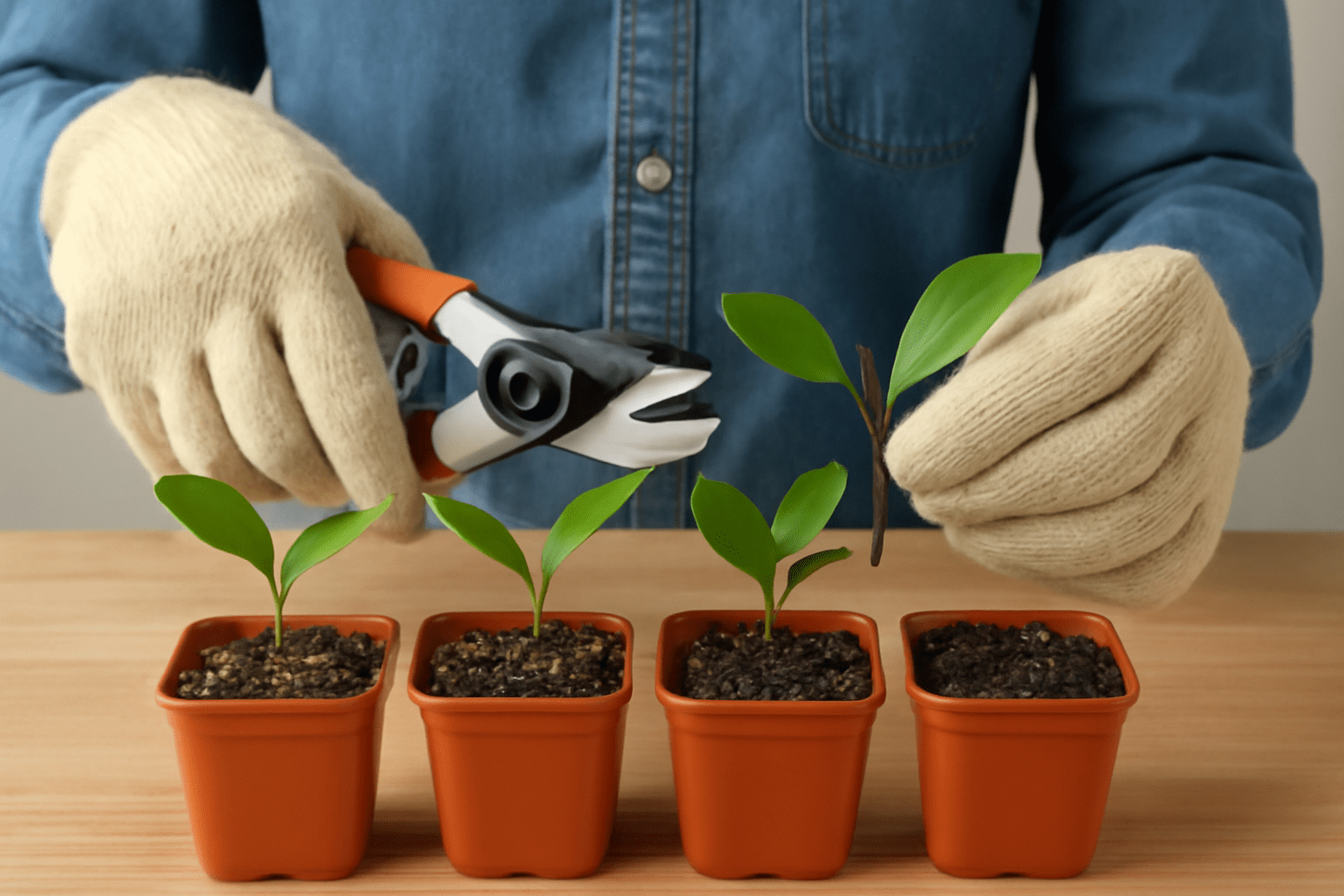
🌱 5. Dealing with Common Pests and Diseases 🌱
Like any young plant, magnolia seedlings are susceptible to a few pests and diseases. 🌿 While they’re generally hardy, it’s essential to keep an eye out for the most common issues: 🌸
- Pests:
- Aphids: These tiny insects can sap the nutrients from young magnolia trees. 🐞 If you notice aphids on your seedlings, try spraying them off with a strong stream of water or use an insecticidal soap. 💧
- Slugs and Snails: These pests may nibble on the leaves of young magnolias. 🐌 Set up slug traps or use organic deterrents to keep them at bay. 🌱
- Diseases:
- Powdery Mildew: If you notice a white, powdery coating on the leaves, this could be a sign of powdery mildew. 🌱 To treat this, remove infected leaves and consider applying an organic fungicide. 🍃
- Root Rot: Root rot can occur if the soil is too soggy. 💧 Ensure proper drainage and avoid overwatering to prevent this issue. 🌿
🌸 6. Be Patient and Enjoy the Journey 🌸
Magnolia trees grow slowly, especially in the early years. ⏳ It might take several years before your young seedlings develop into the stunning trees you envision. 🌿 But remember, good things take time! 🌱 The effort you put into caring for your magnolia tree seedlings now will be rewarded with a tree that blooms beautifully for decades to come. 🌳
🌿 A Quick Recap 🌿
To care for your magnolia seedlings: 🌿
- Hardening Off: Gradually introduce your seedlings to outdoor conditions before planting them outside. 🌸
- Soil and Location: Choose slightly acidic, well-draining soil and a spot with partial sun to full sun, depending on the variety. 🌿
- Watering and Fertilizing: Water deeply, avoid overwatering, and use a balanced, slow-release fertilizer. 🌱
- Pruning: Trim any dead or damaged wood, and shape your magnolia tree as it grows. 🌸
- Pest and Disease Management: Keep an eye out for pests like aphids, and prevent common diseases by maintaining good soil drainage. 🌿
With these care tips, you’ll be well on your way to growing a thriving magnolia tree that will become the centerpiece of your garden. 🌸
🌿 Troubleshooting Common Problems 🌿
Even the most experienced gardeners face a few hiccups along the way, especially when growing magnolia trees from seed. 🌱 Fortunately, with the right knowledge, most problems can be easily identified and solved. 🛠️ In this section, we’ll cover some of the most common issues magnolia growers face and how to fix them. Let’s troubleshoot! 🌸
🌸 Problem 1: Low Germination Rates 🌸
Why It Happens:
Magnolia seeds can be notoriously slow to germinate, and sometimes they don’t sprout at all. 🌱 This can be frustrating, especially if you’ve spent time stratifying and planting your seeds with care. 🌿
Possible Causes:
- Insufficient Cold Stratification: If the seeds didn’t undergo proper cold treatment (stratification), they may not germinate. 🧊
- Old or Low-Quality Seeds: If the seeds were stored improperly or were harvested too early, they may not be viable. 🌱
- Inconsistent Temperature: Magnolias need a consistent, warm environment to germinate. 🌞 Fluctuations in temperature can slow down or stop the process. 🌿
How to Fix It:
- Double-check Stratification: Ensure your seeds were cold-stratified properly (refrigerated for 30-60 days). 🧊 If you’re unsure, you can repeat the process with fresh seeds. 🌱
- Use Fresh Seeds: Always use high-quality, fresh seeds. 🌿 If your seeds didn’t sprout, consider purchasing new ones from a trusted source. 🌸
- Maintain Temperature Consistency: Keep your seeds in a warm, stable environment (around 65–75°F or 18–24°C). 🌞 Consider using a seed mat for consistent warmth. 💡
🌷 Problem 2: Seedlings Not Growing 🌷
Why It Happens:
Your magnolia seedlings have sprouted, but they seem to be stalling in growth. 🌿 This is a common issue, especially for young plants in their early stages. 🌱
Possible Causes:
- Poor Light Conditions: Magnolias need plenty of bright, indirect light to grow. 🌞 If they don’t receive enough light, they may become leggy and weak. 🌱
- Overwatering or Underwatering: Magnolias like consistent moisture but can’t tolerate soggy soil. 💧 Both overwatering and underwatering can stunt their growth. 🌱
- Nutrient Deficiency: While young seedlings don’t need heavy feeding, lack of nutrients could slow growth, especially if the soil isn’t rich enough. 🌿
How to Fix It:
- Increase Light Exposure: Place your seedlings in a spot with more natural light or use grow lights to supplement. 💡 Avoid direct sunlight, which can scorch young leaves. 🌞
- Adjust Watering: Check the soil moisture regularly. 🌱 Keep the soil moist but not soaked—use a well-draining mix to prevent waterlogging. 💧
- Feed Lightly: After your seedlings develop their true leaves, you can begin feeding them with a balanced, slow-release fertilizer. 🌱 Follow the recommended dosage to avoid overfeeding. 🌿
🌸 Problem 3: Yellowing Leaves or Leaf Curling 🌸
Why It Happens:
Yellowing leaves or curling foliage can be a sign that something isn’t quite right with your magnolia tree seedlings. 🌱
Possible Causes:
- Water Stress: Both overwatering and underwatering can cause leaves to yellow. 💧 Magnolia seedlings are sensitive to fluctuations in soil moisture. 🌿
- Nutrient Deficiency: Yellow leaves could indicate a lack of nitrogen or other essential nutrients. 🌱
- Pests or Disease: Aphids, mildew, or fungal diseases can cause leaf damage and yellowing. 🌿

How to Fix It:
- Adjust Watering: Make sure you’re watering your seedlings consistently, keeping the soil moist but not soggy. 🌱 Check the drainage and ensure the pots or trays aren’t sitting in excess water. 💧
- Provide Balanced Fertilization: If you haven’t already, apply a slow-release, balanced fertilizer to help provide the nutrients your seedlings need. 🌱
- Inspect for Pests: Check your seedlings for pests like aphids or scale insects, and treat them with insecticidal soap or a gentle stream of water if needed. 🌿 If mildew or fungus is present, remove the affected leaves and apply an organic fungicide. 🍃
🌱 Problem 4: Root Rot 🌱
Why It Happens:
Root rot is a common issue, particularly if magnolia seedlings are kept in overly damp conditions for extended periods. 💧
Possible Causes:
- Excess Water: If the soil doesn’t drain well or the seedlings are sitting in too much water, the roots can suffocate and rot. 🌱
- Poor Drainage: Magnolia trees need well-draining soil. 🏡 If the soil mix is too heavy or clayey, water may not drain properly, leading to root rot. 🌿
How to Fix It:
- Check Drainage: Ensure your seed trays or pots have drainage holes to allow excess water to escape. 💧 If your seedlings are in trays without drainage, consider repotting them into containers that allow for better water flow. 🌿
- Improve Soil Drainage: Use a light, well-draining potting mix. 🌱 Adding perlite, sand, or bark can help improve drainage in the soil. 🌿
- Reduce Watering: Only water when the top inch of soil feels dry. 🌱 Avoid letting your seedlings sit in excess water. 💧
🌷 Problem 5: Pests and Insects 🌷
Why It Happens:
Pests are an unfortunate part of gardening, and young magnolia seedlings can be especially vulnerable to them. 🌱
Possible Causes:
- Aphids: These tiny insects suck sap from the leaves, causing yellowing, curling, or deformed growth. 🌿
- Slugs and Snails: These pests love munching on soft, young magnolia leaves. 🐌
- Mites or Mealybugs: These pests can cause damage to leaves, resulting in yellowing or spotting. 🌿

How to Fix It:
- Use Insecticidal Soap: If you notice aphids or mealybugs, treat your seedlings with insecticidal soap or neem oil. 🌱 Both are safe and effective for young plants. 🍃
- Manual Removal: For slugs and snails, you can remove them by hand or use organic deterrents like crushed eggshells around your pots to keep them away. 🐌
- Maintain Cleanliness: Regularly inspect your seedlings for pests and remove any affected leaves. 🌱 Keeping your growing area clean will help minimize pest problems. 🌿
🌱 Problem 6: Seedlings Not Transplanting Well 🌱
Why It Happens:
Your magnolia seedlings may have been thriving indoors, but when you move them outside, they don’t seem to do as well. 🌿
Possible Causes:
- Shock from Transplanting: Moving seedlings from a controlled indoor environment to the outdoors can cause transplant shock. 🌱 This is especially true if you haven’t hardened them off gradually. 🌳
- Poor Acclimatization: If the outdoor conditions (such as sunlight, wind, or temperature) are very different from what the seedlings were accustomed to, they may struggle to adjust. 🌞
How to Fix It:
- Hardening Off: Before transplanting, harden your seedlings by gradually exposing them to outdoor conditions. 🌿 Start with a few hours of shade and slowly increase the time outside. 🌱
- Choose the Right Spot: Make sure the outdoor planting site is suitable for magnolias—ideally, full to partial sun, and with well-draining, acidic soil. 🌸
🌸 A Quick Recap 🌸
Troubleshooting common problems with magnolia seedlings is all about identifying the issue and making the necessary adjustments. 🌱 Here’s a summary of how to tackle these issues: 🌸
- Low Germination Rates: Ensure proper cold stratification, use fresh seeds, and maintain consistent temperatures. 🌿
- Seedlings Not Growing: Provide enough light, water carefully, and consider fertilizing lightly. 🌱
- Yellowing or Curling Leaves: Check watering habits, provide nutrients, and look for pests or diseases. 🍃
- Root Rot: Improve drainage, reduce watering, and check for root rot signs. 💧
- Pests: Treat with insecticidal soap or remove pests manually. 🐞
- Transplanting Shock: Harden off seedlings gradually and choose the right outdoor site. 🌿
With these troubleshooting tips, you’ll be well-equipped to tackle any challenges that arise as you grow your magnolia trees from seed. 🌳 Stay patient and keep caring for your seedlings—soon, you’ll see them thrive! 🌸
🌿 Final Thoughts 🌿
Growing magnolia trees from seed is a rewarding journey that requires patience, attention, and a bit of know-how. 🌱 While it’s not a quick process, the effort you put into nurturing these trees from tiny seeds into magnificent blooms is truly worth it. 🌸 Whether you’re adding a new tree to your garden or experimenting with rare varieties, the experience will connect you with nature and leave you with a beautiful, lasting addition to your landscape. 🌳
Remember, magnolia trees grow slowly, but with the right care—cold stratification, proper soil, watering, and light—you’ll be on your way to success. 🌱 Don’t be discouraged by the challenges; even experienced gardeners face hiccups along the way. 🌿 Stay patient, be consistent, and troubleshoot when necessary. 🌸

As you watch your magnolia tree grow, you’ll not only be cultivating a beautiful plant but also gaining valuable gardening skills that will serve you for years to come. 🌿 Whether you’re growing magnolias for their beauty, their fragrance, or simply for the joy of the process, you’re investing in a tree that will bring beauty and serenity to your space for generations. 🌳✨
Good luck on your magnolia-growing adventure, and may your seedlings grow strong and bloom beautifully! 🌸🌿
Frequently Asked Questions (FAQs)
How long does it take to grow a magnolia tree from seed?
Growing a magnolia tree from seed typically takes 2 to 3 years to reach a healthy size where it can be transplanted outdoors. The process is slow, with seeds requiring cold stratification for 30-60 days before germination and continued care after sprouting. Patience is key, but the reward of a mature tree is worth the wait! 🌱
Can I grow a magnolia tree indoors from seed?
Yes, you can start magnolia seeds indoors, especially if you live in a cooler climate. Just make sure to provide the right conditions: cold stratification for 30–60 days in the fridge, followed by a warm environment (65–75°F or 18–24°C) with bright, indirect light for germination. Once the seedlings are strong enough, you can transplant them outdoors when the weather warms up. 🌞
What is cold stratification, and why is it important for magnolia seeds?
Cold stratification is a process that mimics winter conditions for seeds, breaking their dormancy and triggering germination. Magnolia seeds require 30 to 60 days of cold treatment at about 40°F (4°C) in a fridge to sprout. This step is essential for successful germination, as it helps the seeds “wake up” from their natural dormancy. 🥶
What type of soil is best for growing magnolia trees from seed?
Magnolia trees prefer well-draining, slightly acidic soil. A good potting mix with organic matter, like peat moss or compost, is ideal. You can also add sand or perlite to improve drainage and avoid waterlogged soil, which magnolias dislike. 🌿
How often should I water my magnolia seedlings?
Magnolia seedlings need consistent moisture, but they don’t like to sit in soggy soil. Water your seedlings once a week or whenever the top inch of soil feels dry. Ensure good drainage to prevent waterlogging, which can cause root rot. 💧
How can I tell if my magnolia seeds are viable?
Viable magnolia seeds are typically plump and firm. If the seeds float when placed in water, they may not be viable. After soaking them for 24 hours, discard any seeds that don’t sink—they likely won’t germinate. 🌱
When is the best time to plant magnolia seedlings outdoors?
The best time to plant your magnolia seedlings outdoors is in early spring or fall after the danger of frost has passed. It’s important to harden off seedlings before transplanting them to allow them to adjust to outdoor conditions gradually. 🌞
What should I do if my magnolia seedlings aren’t growing?
If your magnolia seedlings aren’t growing, check for adequate light, proper soil moisture, and the right temperature. Make sure the seedlings aren’t overcrowded and that they have enough space to spread their roots. If necessary, provide gentle fertilizer once they have several true leaves. 🌿
